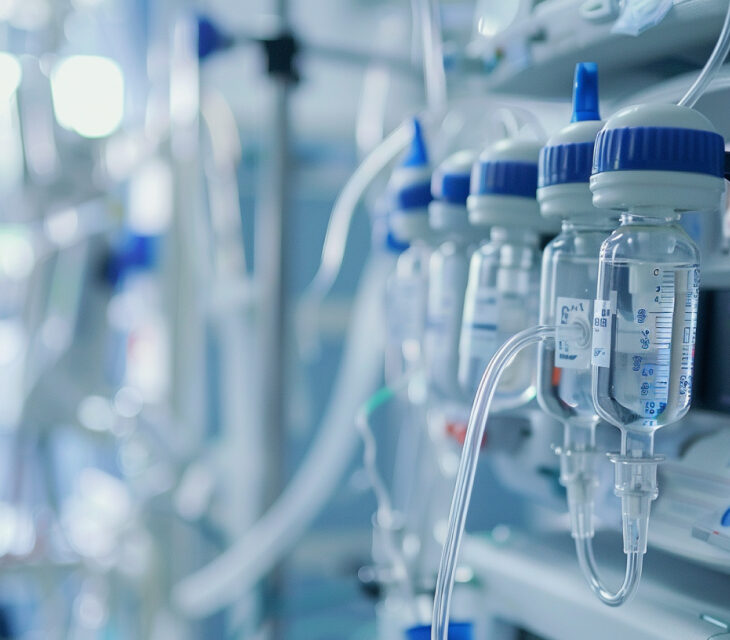SCHEER Updates Guidelines on Phthalates in Medical Devices
The Scientific Committee on Health, Environmental, and Emerging Risks (SCHEER) has released an update to its 2019 guidelines on the benefit-risk assessment (BRA) of phthalates in certain medical devices. These phthalates, known for their carcinogenic, mutagenic, toxic to reproduction (CMR), or endocrine-disrupting (ED) properties, pose significant health risks. The updated guidelines are a result of new scientific data and regulatory developments over the past five years, aiming to improve the safety and effectiveness of medical devices containing these substances.

About the SCHEER Committee
SCHEER is one of two independent non-food scientific committees providing the European Commission with essential scientific advice on consumer safety, public health, and environmental issues. Alongside the Scientific Committee on Consumer Safety (SCCS), SCHEER evaluates scientific data to identify and assess potential risks, drawing attention to new or emerging problems that may pose actual or potential threats. The Committee is composed of independent scientists from around the world who are dedicated to working in the public interest.
SCHEER addresses a broad range of issues, including:
- Health and environmental risks related to pollutants in air, water, waste, and soils.
- Complex, multidisciplinary issues requiring comprehensive risk assessments, such as antimicrobial resistance, nanotechnologies, medical devices, and physical hazards like noise and electromagnetic fields.
In its work, SCHEER collaborates with other Union bodies such as the European Food Safety Authority (EFSA), the European Medicines Agency (EMA), the European Centre for Disease Prevention and Control (ECDC), and the European Chemicals Agency (ECHA).
Main Changes in the Updated Guidelines
The SCHEER update introduces several key changes to the guidelines, reflecting the latest scientific evidence and regulatory updates.
Significant changes include:
- Enhanced information on the use of the guidelines and a detailed chemical description of phthalates as esters of phthalic acid, along with recent regulatory developments.
- Inclusion of the sources of evidence used and the Weight of Evidence (WoE) approach adopted by SCHEER, with details on the literature search performed.
- Adjustments in the framework for evaluating alternatives to CMR/ED phthalates, focusing on identifying the “most relevant” candidates to avoid unnecessary evaluations. A minimum of three alternatives should be assessed, with fewer requiring additional justification.
- Additional information referencing (EN) ISO 10993-18 for describing and characterising the composition of medical devices.
- New information on ED hazard classification, distinguishing between Category 1 (known or presumed endocrine disruptors) and Category 2 (suspected endocrine disruptors) for both human health and the environment.
- Expansion of annexes to include exposure to and health hazards of current CMR/ED phthalate alternatives, and progress in developing these alternatives for use in blood bags.
Purpose of the Changes
The updated guidelines aim to enhance the BRA of phthalates in medical devices by incorporating recent scientific and regulatory advancements. The revisions seek to:
- Improve the identification and evaluation of suitable alternatives to CMR/ED phthalates.
- Ensure a balanced approach to assessing the risks and benefits of using phthalates versus alternatives.
- Promote transparency and clarity in the BRA process for all stakeholders, including manufacturers, notified bodies, and regulatory authorities.
- Foster the development and use of safer alternatives in medical devices to protect patient health and safety.
Phthalates, used extensively as plasticisers in various applications including medical devices, pose significant health risks due to their weak interaction with polymers, leading to potential release and human exposure. The European Union’s Medical Device Regulation (MDR) allows the use of CMR 1A/1B and/or ED substances in certain medical devices above a concentration of 0.1% w/w, provided there is proper justification. This justification involves several steps, including the evaluation of alternative substances, materials, designs, and medical treatments, considering both risks and the overall benefit-risk ratio.
The updated SCHEER guidelines provide a comprehensive methodology for conducting BRA for phthalates in medical devices, ensuring that alternatives are thoroughly evaluated and that the safety and performance of medical devices are maintained. The guidelines also highlight the importance of generating high-quality data on alternatives to CMR/ED phthalates to inform future regulatory decisions and enhance patient safety.
These updates reaffirm SCHEER’s commitment to advancing public health and safety through rigorous scientific assessment and transparent communication of risks and benefits associated with medical devices.
Find out more: